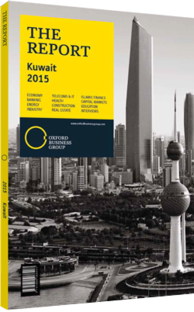Khaled Al Mashaan, Vice-Chairman and CEO, Alargan: Interview

Interview: Khaled Al Mashaan
In what ways can the private sector help consolidate the real estate market into an alternative to the stock market for international investors?
KHALED AL MASHAAN: Kuwait’s economy is largely self-sufficient and has therefore remained unaffected by events such as the global recession and regional political turbulence. There will always be a demand for housing, albeit with a short supply until public-private partnership rules are fully implemented. This should increase supply in the next few years.
The Ministry of Housing (MoH) is currently on the right track, having established a council to appoint people with expertise outside of the ministry to derive a strategy and implement a plan to supply a number of homes. The MoH will give packages to developers or sub-developers in large areas where the private sector can provide their expertise in line with the required guidelines. This will be a true test of how the public and private sectors can work together to solve a major issue for Kuwait’s future, namely the lack of homes for its citizens. Indeed, this news is encouraging as any achievements that come out of this collaboration will pave the way for further issues to be solved in this manner.
What can be done to ensure supply and demand in the housing sector remains consistent with the overall needs of the market?
AL MASHAAN: In terms of the housing rental market, which consists of commercial and residential rentals, yields are still quite competitive, fetching between 6-7%, while interest rates are most likely going to hold where they are currently. However, increasing supply does mean there is a chance for yields to decrease to around 5-5.5%.
In terms of consistency, we need to focus more on the growth of the economy. The slowdown in the market, due largely to decreasing oil prices and the concurrent fall in the number of expatriates coming to Kuwait, will significantly impact the demand for rentals. If this trend continues, the supply of buildings will grow as occupancy levels drop. Moreover, the private sector should adopt a prudent attitude, rather than simply building whatever everyone else is building. Instead, developers should identify and cater to identifiable gaps within the market.
To what extent can the private and public sector work together to build a stronger and more sustainable property sector for all Kuwaitis?
AL MASHAAN: There is a lack of attention given to sustainability in Kuwait’s housing market. One of the duties of the public sector is to make sure that when the private sector has adopted a bullish tone, there is some type of restraint put in place to keep the market under control. There is currently a mentality among some Kuwaiti developers of building residential buildings without first assessing demand. As a result, many buildings have vacancy rates of around 30%. What the market needs instead are first-hand surveys. At present, developers do not have access to any data on which to base their assumptions, or to accurately measure absorption rates. If this data is not available, it then becomes impossible to tell whether a building will be filled in a year, how many other buildings are going up in an area and what the demand is like for that particular area.
Conversely, in the US, an analysis of forecast demand is required prior to new construction, preventing the proliferation of empty buildings that harm economic activity. After showing demand drivers and the absorption rate, a traffic report must also be drawn up to show how the proposed building is expected to impact congestion in the area. These elements are missing from Kuwait’s housing market, and represent an opportunity for greater collaboration between the public and private sector.
Therefore, we need to enact legislation that, once implemented, would be able to encourage and compel the private sector to provide these services.
You have reached the limit of premium articles you can view for free.
Choose from the options below to purchase print or digital editions of our Reports. You can also purchase a website subscription giving you unlimited access to all of our Reports online for 12 months.
If you have already purchased this Report or have a website subscription, please login to continue.

